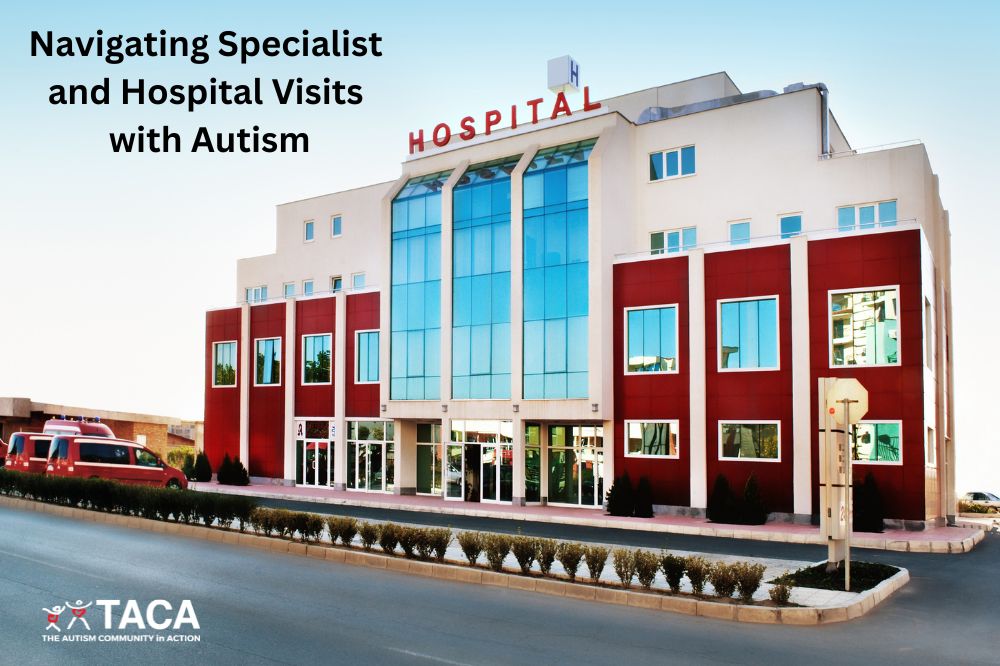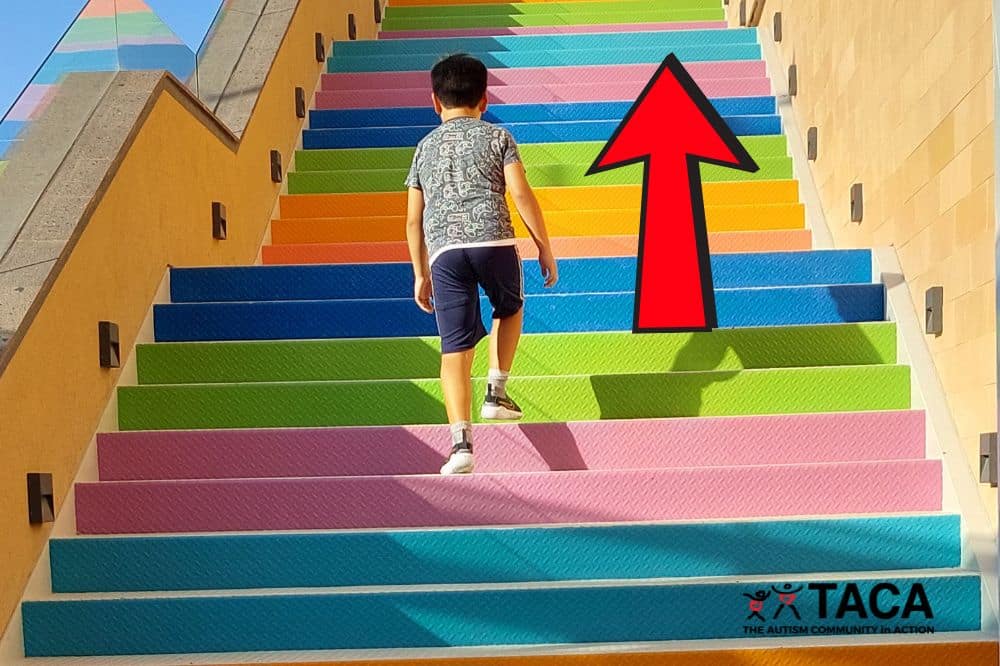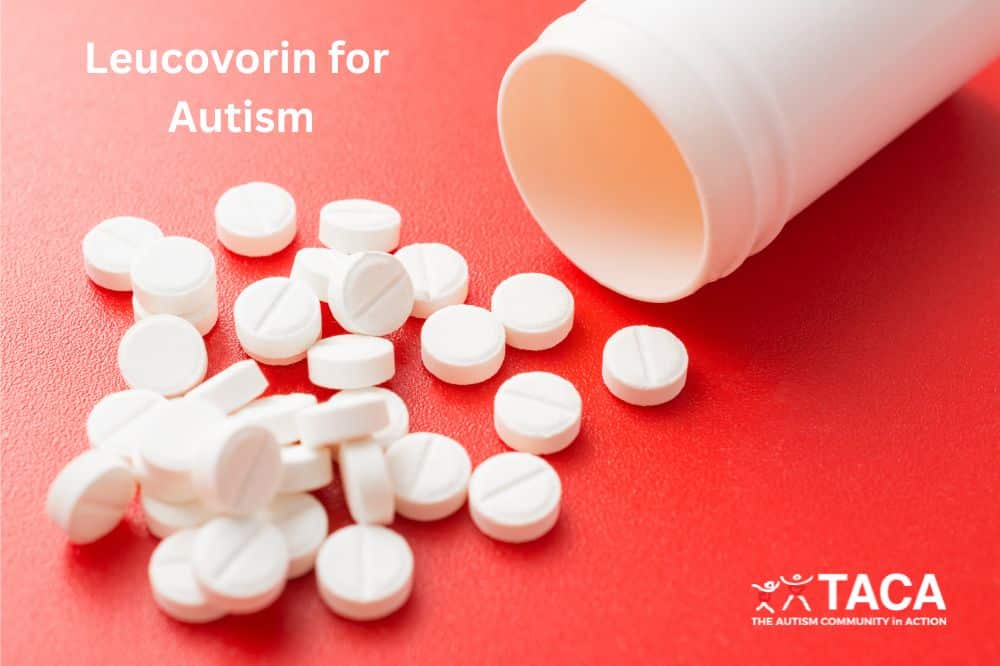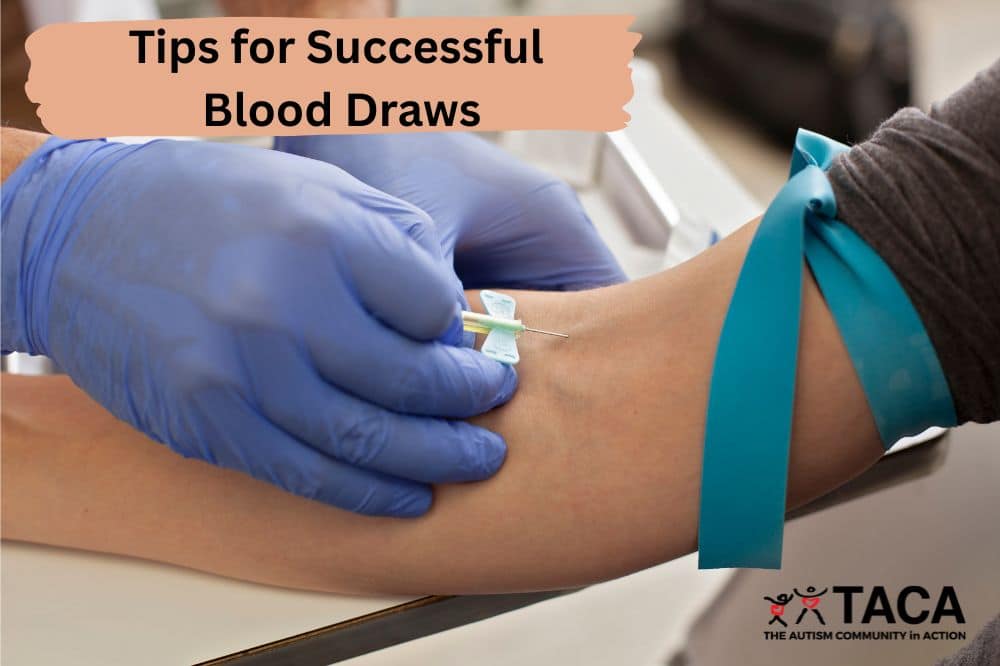Therapeutic and Communication Options for Speech Issues in Autism
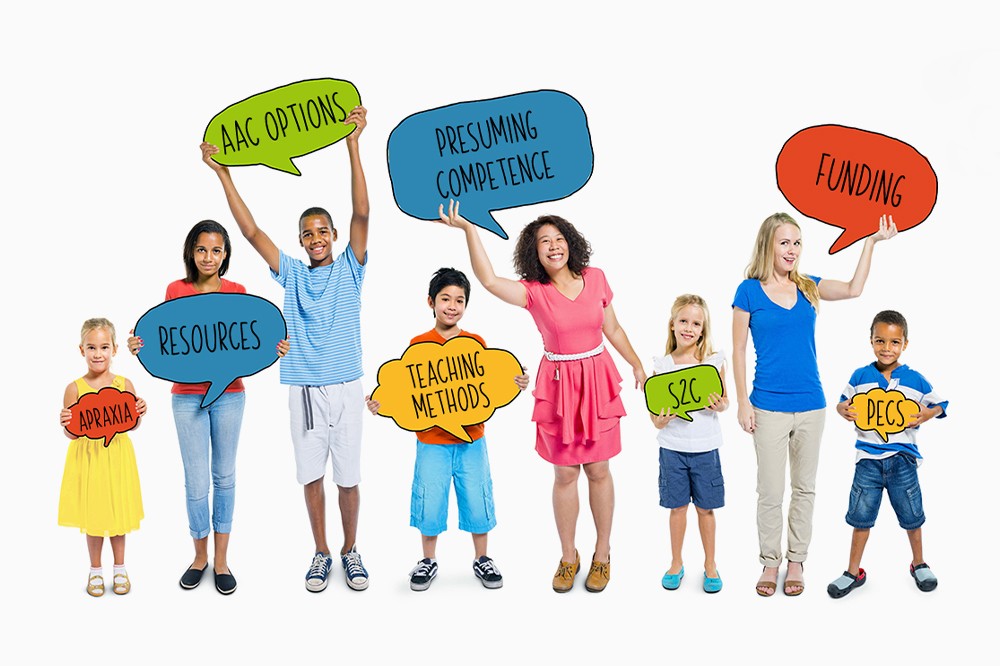
All contents of this resource were created for informational purposes only and are not intended to be a substitute for professional advice, diagnosis, or treatment. Always seek the advice of your physician, therapist, or other qualified health providers with any questions or concerns you may have.
Providing your child with an effective means to communicate their thoughts, opinions, experiences, feelings, and knowledge is essential to creating a meaningful life for them. While it’s true that navigating speech issues in autism can be challenging, it is important to remember that challenging does NOT mean impossible. Furthermore, you don’t have to navigate these challenges alone – TACA is here to help. This article discusses therapeutic and communication options to address speech issues in autism, including information about:
- Building Your Child’s Therapy Team
- Teaching Methods Therapists Use to Help Develop Speech
- Communication Options for Non-Speaking and Minimally Speaking Individuals
- Augmentative and Alternative Communication (AAC)
- AAC Screening and Selection Process
- AAC Modalities
- Funding for AAC Devices
- AAC Resources
Please note: There are two approaches to addressing speech issues in autism: medical and therapeutic. TACA recommends that parents utilize both approaches in order to achieve the best possible outcome for their child. This is because underlying medical issues can cause, or exacerbate, speech issues. And, unfortunately, medical issues cannot be remedied with therapy alone.
To learn more about the Medical Causes of Speech Issues in Autism, click here.
Terms to be Familiar With:
- Apraxia: a motor speech disorder, involving the nervous system that makes it difficult or impossible for a person to speak.
- To clarify, this isn’t an issue of muscle weakness. Rather, apraxia is a neurological issue that affects the muscle’s ability to perform.
- People with apraxia understand language and know what they want to say, but their brains have difficulty directing and coordinating the muscle movements needed to make sounds and formulate words.
- Find out more information about apraxia, including what makes speech therapy different for children with apraxia at Apraxia Kids.
- Developmental Speech Delay: when a child follows a “typical” path of speech development, but at a rate slower than normal.
- Method: approach or way of teaching.
- Modality: form of communication a person uses to express themselves (verbal speech and all forms of AAC).
- Augmentative and Alternative Communication (AAC): all forms/modalities of communication a person can use to express their needs, wants, thoughts, and ideas without talking.
Building Your Child’s Therapy Team

Before your child can begin therapeutic services, they need to be screened and assessed. This can be done through your state’s Early Childhood Intervention (ECI) program, your local school district, private insurance, or private pay. Keep in mind, services obtained through ECI and the school district are almost always free of charge. To learn more about the screening and assessment process, please read I Think My Child May Have Autism.
Once your child has been screened and assessed, they can begin therapy. Therapeutic speech interventions can be provided by speech therapists, behavior therapists, or both. Many parents have success with a team approach, where both speech and behavior therapists give input related to their specific area of expertise. However, if you choose to go with the team approach, don’t forget to make sure your child’s therapists are on the same page! If therapists approach skills in completely different ways, your child may have a difficult time mastering those skills.
When building your child’s therapy team, keep in mind that speech therapy is not a one-size-fits-all approach. In fact, there are many different methods and modalities therapists can use to help develop and improve functional communication skills. Additionally, speech therapists work with motor planning and AAC needs.
When building your child’s therapy team be sure to:
- Choose therapists who believe in your child and their right to communicate
- Be mindful of your child’s unique needs, strengths, and learning style
- What helps your friend’s child may not help your child
- Ask for recommendations from other families in your area
- Safety should always be at the forefront of every parent’s mind – especially parents of children who have trouble communicating
- Read TACA’s article on Risk Reduction Strategies for Physical and Sexual Abuse to learn more about how to help keep your child safe
- Look for a qualified professional who knows about all of the different teaching methods and AAC options that are available
- If your child has issues with motor planning, seek out a therapist who is familiar with apraxia
- Remember that you are an important member of the team
- Assist your child’s therapists in developing SMART Goals for your child
- Work on goals at home (while keeping in mind that a balanced life includes rest)
Teaching Methods Therapists Use to Address Speech Issues in Autism

Below you will find a brief description of some of the methods therapists can use to teach and build communication skills (please keep in mind that this list is not exhaustive).
Discrete Trial Training (DTT)
DTT is based on the idea that you can teach any skill by breaking it down into small, “discrete” or distinct components. Instead of teaching an entire skill at once, DTT breaks it down and builds it up, using discrete trials that teach each step, one at a time.
Verbal Behavior (VB)
Verbal Behavior teaches people to communicate by associating words with their purposes. Rather than focusing on words as labels, this method teaches why we use words to communicate our needs and ideas.
Facilitated Communication (FC)*
Facilitated Communication is a teaching method where a person, called a facilitator, gives physical and emotional support to assist people who are learning to communicate by pointing to letters, words, or pictures. The goal is to gradually fade physical supports out as the communicator becomes more independent. For further information about FC, please visit the Wellspring Guild.
Prompts for Restructuring Oral Muscular Phonetic Targets (PROMPT)
Because speech is created by using movements of the jaw, lips, and tongue, PROMPT uses a tactile-kinesthetic (touch and feel) approach to speech development. PROMPT therapists use their hands to teach individuals how to correctly move their jaw, lips, and tongue in order to form words. This type of therapy can be useful for those with motor speech delays, like apraxia.
Rapid Prompting Method (RPM)*
Developed by Soma Mukhopadhyay, RPM is a method that is used to teach academics, where communication is also taught in the process. The academic focus of every RPM lesson is designed to activate the reasoning part of the brain so that the student becomes distracted by and engaged in learning. Click here to learn more about RPM.
If you’re looking for an RPM provider, there is a private Facebook Group called Unlocking Voices which has a list of trained and certified SomaRPM providers. Unlocking Voices works with Soma to maintain this list. They also have good information on tutorials and other resources.
Spellers Method
Spellers Method is a multidisciplinary approach that helps nonspeakers, minimal speakers and unreliable speakers develop the intentional motor skills and regulation needed to spell or type to communicate. Combining occupational therapy, developmental optometry, spelling for communication as well as current research, Spellers Method practitioners guide parents and caregivers to be confident communication partners and motor coaches for their loved one with apraxia. Click here to learn more about Spellers.
Spelling to Communicate (S2C)*
S2C teaches individuals with motor challenges, like apraxia, the purposeful motor skills necessary to point to letters to spell as an alternative means of communication. The goal is to achieve synchrony between the brain and body. As motor skills improve, students progress from pointing to letters on letterboards to spell, to typing on a keyboard.
For additional information about S2C, click here. Similarly, if you are interested in being trained as a communication partner, you may want to look into I-ASC. They are an affiliate of S2C, and there is hope they will expand to other communication modalities.
Communication Options for Speech Issues in Autism

Now that you know about some of the teaching methods therapists use to help address speech issues like apraxia in autism, let’s talk about the different tools, or modalities, people can use to communicate with. There are many different options that non-speaking, minimally speaking, and unreliably speaking individuals can use to communicate. These options are referred to as Augmentative and Alternative Communication (AAC).
Augmentative and Alternative Communication (AAC)
Augmentative and Alternative Communication (AAC) includes all modalities (forms) of communication a person can use to express needs, wants, thoughts, and ideas without talking.
Before we go further, let’s address some common myths about AAC.
- Myth: If my child uses AAC, they’ll lose their motivation to talk.
Fact: AAC will NOT stop your child from using or developing verbal speech. Research has repeatedly shown that AAC encourages and improves natural speech development. - Myth: My child is too young for AAC.
Fact: A person can never be too young to augment communication. Research has shown that AAC increases vocabulary for children 3 years and younger (see here and here). - Myth: My child lacks the cognitive skills needed to learn how to use AAC.
Fact: There are no prerequisite skills to use AAC. In fact, development of language skills can lead to functional cognitive gains.
AAC Screening and Selection Process
Finding an AAC provider can be a bit tricky because it overlaps into multiple disciplinary fields (OT, PT, Speech, etc.). Typically, a speech therapist with a specialty in AAC will screen your child to determine if there is a need for it. However, that is not always the case. Therefore, don’t be afraid to look for professionals outside of a speech setting for help (for additional guidance finding a qualified AAC provider, check out this blog from PrAActical AAC).
Also, you may need to add another member to your child’s team for the screening and selection process. In fact, many schools and service providers use Assistive Technology (AT) specialists for augmentative communication evaluations and trainings. Because the AT specialist will be new to your child’s team, they’re less likely to be familiar with your child’s abilities and needs. Therefore, it is crucial that you convey your specific want when requesting an “Assistive Technology Assessment” through the school. For example, if you want an Augmentative and Alternative Communication (AAC) evaluation, you should specify so. This is because not all AT evaluations include AAC.
Once the need for AAC is determined, your service provider will involve you in deciding which AAC system will work best for your child. They will also train everyone on how to use the AAC system, document progress, and make changes when necessary. When dealing with your school district, please keep the training piece of this in mind. After all, teachers need to receive training on how to properly use your child’s AAC system too.
AAC Modalities (Options)
As mentioned earlier, there are many different AAC options. In fact, AAC modalities can be aided or unaided, low tech or high tech. Likewise, a person may need (and should have access to!) a combination of many different modalities. Ultimately, what matters is finding the right AAC system that works for your child.
Below is a chart with some examples of AAC modalities.
| Unaided | Aided | |
| No-tech | Low Tech | High Tech |
| • Gestures • Body Language • Facial Expressions • Sign Language** | • PECS Picture Exchange Communication System • White Board • Communication Boards • Pen and paper | • Dynavox • Proloquo2Go • iCommunicate • QuickTalk • TouchChat • LAMP |
**Because sign language requires advanced fine motor planning abilities and coordination, it is not a viable option for many people with autism.
Again, the methods and modalities mentioned above are not the only options available. There are websites and blogs that contain pages and pages of information dedicated solely to this topic. If you wish to continue researching, please see the AAC Resources Section at the end of this article.
Funding for AAC Devices
If your child is in between the ages of 3-22, both an evaluation and the AAC devices/materials should be provided by the public-school system. When using services through the school, be sure that your child’s IEP grants them access to their devices and materials 24 hours a day. After all, your child needs opportunities to practice using AAC at school, at home, and in the community. Furthermore, having this access outside of school will ensure continuance of their program and goals, ultimately giving your child the ability to generalize their communication skills.
If your child isn’t between the ages of 3-22, you can obtain funding for AAC evaluations and devices through Medicaid and private insurance.
For more funding resources, please check out the following:
- TACA’s private online support group for parents, Hope and Help for Autism.
- It has some great threads with tips from parents who were able to successfully troubleshoot and get their child’s AAC device covered.
- Our article, How To Get An iPad (or other AT/AAC device) Funded, might help as well.
Conclusion: Presume Competence
It is important to know that your child is listening to you. Even more important, they have thoughts and feelings they need and want to express. Presume competence.
To clarify, when we talk about presuming competence, it doesn’t mean we presume that our kids already know everything. Rather, it means we presume they have the desire and ability to learn age appropriate material – especially when using their preferred communication modality(ies), accommodations, and teaching strategies.
Furthermore, simply having access to all of the right tools is not enough. As one speech-language pathologist wisely explains:
“Having a communication device doesn’t make you an effective communicator any more than having a piano makes you a musician.”
David Beukelman, Ph.D.
In other words, your child needs to be taught how to use those tools with a method that meets their individual learning style and needs. Please ensure that your child has access to both the tools and the teaching methods in the classroom and the community. Doing so will give them the ability to express their voice and lead a full, purposeful life.
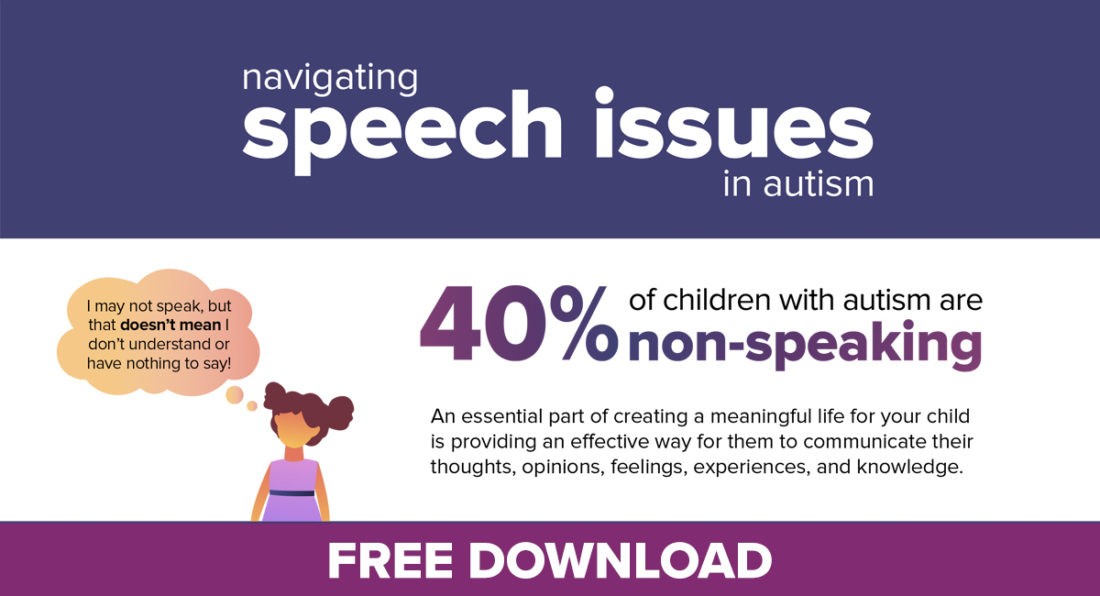
AAC Resources For Speech Issues In Autism
- PrAACtical AAC is a great place to find resources and strategies to improve communication and literacy abilities.
- Communication First is a nonprofit organization dedicated to protecting and advancing the civil rights of people of all ages in the United States who, due to disability or other condition, are unable to rely on speech alone to communicate.
- United for Communication Choice is a grassroots organization established in support of the human, civil, and legal rights of people with disabilities to choose their most effective methods of communication.
- USSAAC (United States Society for Augmentative and Alternative Communication) is dedicated to providing information and support on the issues, technology, tools and advancements within the world of AAC.
- The University of Nebraska-Lincoln’s Department of Special Education and Communication Disorders.
- Closing the Gap empowers educators, professionals, parents and users with the latest research, tools and resources to deepen their assistive technology knowledge, best practices and implementation strategies.
Additional Resources
Further Reading
- Speech Issues in Autism: Introduction
- Speech Issues in Autism: Medical Causes and Treatment Options
- How To Get An iPad (or other AT/AAC device) Funded
- Speech, Language, and Hearing Development Milestones
- Find your state or territory’s Early Childhood Intervention (ECI) contact information

